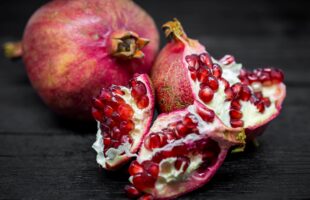
Courtesy of IFF Nourish
Asia Food Journal speaks to Michelle Lee, Regional Marketing Leader of Greater Asia of IFF’s Nourish business division to get her insights on the ingredients space and what is on the horizon in 2022.
How does the food and beverage market look like in 2022? What are the overarching consumer and industrial trends, growth opportunities that players in the industry should watch out for?
The food & beverage industry is undergoing major transformation, driven by changing consumer preferences, demographic trends, product innovation, and supply chain changes. In 2022, we see this market largely remaining ‘health oriented’. As more consumers realize the impact of diet on both planet and health, the shift towards personal nutrition, healthier diets, and natural and sustainably sourced products, etc. will be even more pronounced.
The way people prepare, experience, and consume their food has also been changed by the onset of the pandemic. Consumers are now more conscious of food safety and sourcing. Other trends reshaping the landscape include rapid middle-class expansion and rising disposable incomes that drive demand for premium food and beverage options; new regulatory developments that force manufacturers to rethink product formulations; and even ageing populations that demand more nutrient-rich foods. Plant-based alternatives will continue to gain popularity, with the global market for these expected to hit US$162 billion by 2030.
These developments present untapped opportunities for creative ingredients, flavours, and product design solutions in the areas of healthy and nutritious foods, plant-based and meat alternatives, functional food and beverages, and immune health, among others. In product design, it is important to cater to the Asian palate and provide the comfort of familiarity, while being associated with health.
Specifically, how will these trends affect the ingredients market? What are the consumer priorities in the coming year, especially as we’re approaching the post-pandemic era?
With an increased focus on healthy, sustainable, ‘better-for-you’ foods, consumers are choosing to include more plant-based protein in their diet. Consumers are also looking for nutrient-dense foods in convenient formats that do not compromise taste and texture. Ingredients will become even more crucial as enablers of the development of market-leading food and beverage solutions in a post-pandemic era.
Technology – such as flavour modulation technologies to create even more delicious products with unique tastes – is also an important aspect to the development of new ingredients. With the integration of technology and key insights into ingredient development, there will be new breakthroughs in plant-based proteins, flavour innovations, as well as ingredients for nutrition, immunity, and shelf life. These include probiotics, stabilizers, and emulsifiers, among others.
What ingredients are poised to take traction? What benefits do they provide not just the consumer, but to companies in the industry too?
Ingredients in the plant-based, alternative protein, and immune health categories will continue to gain traction in the market. This is being driven by a greater adoption of the flexitarian diet, growing health awareness, and heightened environmental concerns. Plant-based ingredients highlight how food & beverage manufacturers can continue to meet changing consumer demands by improving the taste and texture of their products, but also by increasing their nutritional benefits and shelf life. Plant-based products are also highly sustainable, providing an important point of differentiation in today’s more environmentally conscious world.
In short, they allow for greater versatility, which enables food and beverage customers to develop products that appeal to a wider range of consumers and their eating habits. This includes those on strict vegan diets, and omnivores who are looking to increase their consumption of plant-based foods for health or create a positive impact on the environment with responsibly sourced ingredients such as soy and coconut.
For example, our new plant-based cream solution was designed specifically to provide higher nutritional value and shelf life. Perfect for customers looking for plant-based whipping creams to satisfy sweet tooth cravings, this coconut fat-based solution not only takes advantage of a familiar and well-liked ingredient, but also offers superior whipping speed and foam firmness, extending its range of use.
What innovations or new items are coming up for IFF’s Nourish? Are there any upgrades to watch out for that will support the company’s expansion or growth?
To better serve our customers, we are always looking to expand our global innovation and manufacturing network, to enhance our capabilities and improve our grasp of the markets. The latest expansion of our facility in Karawang, Indonesia has been a significant milestone for us. As the largest IFF flavors manufacturing facility in Greater Asia, the site houses a full manufacturing facility (Liquids, Powders, Emulsions and Spray Drying), warehousing, manufacturing office, and quality control center for Indonesia, servicing customers in Southeast Asia and North Asia.
Expansion works were undertaken to increase production capacity, introduce more warehousing, strengthen R&D and manufacturing capabilities, and improve operational efficiencies. This investment is consistent with our strategy to capture the growth potential of emerging markets in Greater Asia. The new facility will play a critical role in expanding our Nourish division’s footprint, as we ramp up capacity to meet the growing needs of this region.
What is the future of the ingredients space in the coming months?
As a result of the pandemic, more consumers are aware of how immune-boosting ingredients in food & beverage applications can affect their overall health. This includes innovation in the nutritional beverage, yogurt, and functional dairy product categories. Such products boost gut health, which is important in building up immunity for all ages – from children to seniors looking to age healthily.
In addition, emerging technologies and innovations will aid in the need to continuously improve the taste and texture of plant-based alternatives. As more consumers adopt a flexitarian diet, they are looking for more variety with their plant-based alternatives that go beyond burgers, nuggets, or sausages.
One of the trends we will see is the use of fermentation to optimize the taste and texture of ingredients found in plant-based meat and dairy. Fermentation not only addresses taste and texture needs, but also improves scalability and cost-efficiencies.
While technologies like 3D printing are touted to be a major part of ingredients manufacturing, aeration of food ingredients proves to be an effective technology. Aeration allows for improvements in texture, as well as providing shelf-stable solutions that can be used for a variety of applications.
At IFF, we are looking to mix familiarity with new experiences. This entails going ‘beyond mimicking’ and creating novel eating experiences that are familiar enough to be incorporated into daily diets. We have been working with umami modulators for several years now, and along with fermentation, are designing ingredients to satisfy innate cravings. For example, Fat design for plant-based is about nailing taste delivery, succulence, texture, and visual appearance – with smart fat compositions that have both a similar behaviour to animal fat and are stable in the plant protein product. The overall taste sensation consumers can enjoy is determined by the interplay of ingredients which is impacted by the fat modulation and design.








